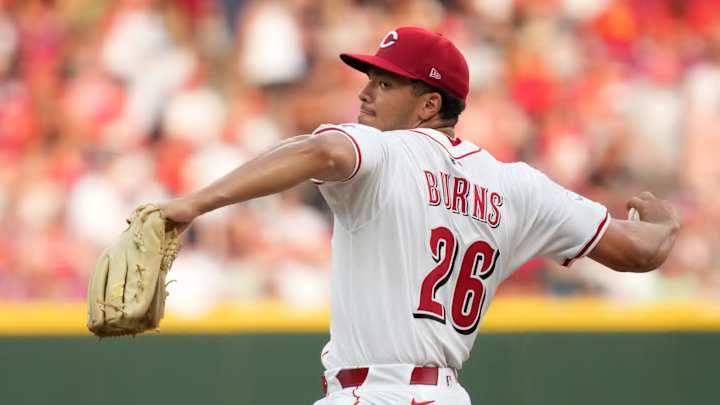Chase Burns’ dominant debut had Cincinnati Reds fans dreaming of the years to come (though his second start left a lot to the imagination). Season upon season of that fastball-slider combo. Soon some will likely call on the team to lock the young star into a long-term contract before his talent outpaces the Reds’ budget. Any consideration of an extension, though, should bear in mind the Reds’ fraught history with star pitching prospects.
In another world, Burns may not have even been needed in the Reds’ rotation. That starting spot may instead have been filled by last year’s phenom Rhett Lowder, whose two-hit debut rivaled Burns’ in terms of hype.
Unfortunately, Lowder has just begun his rehab program from a double whammy of forearm and oblique injuries early this season. Lowder’s disappointing start, the latest in a string of pitching prospect setbacks, should caution the Reds against investing too heavily and hastily in young arms.
Before the Reds invest long-term in Chase Burns, the club needs to reflect on string of prospect injuries
Nearly every top pitching prospect in the Reds system has missed significant time due to injury. Tejay Antone, for example, was once a Top 10 prospect in the Reds’ system according to Baseball America, and his rookie season positioned him well for an Opening Day bullpen spot in 2021. Three Tommy John surgeries later, Antone is no longer on the 40-man roster and hoping for a comeback at the age 31.
Burns’ contemporaries have been among the most beset with injuries. Julian Aguiar, who likely would have competed for a rotation spot, is sitting out the season after Tommy John surgery, as is former top prospect Brandon Williamson. The Reds could fill an entire rotation with promising young players on the injured list.
Not every injury-prone prospect has such a dire outcome. Hunter Greene is still the second-most valuable player on the team this year in spite of being limited to 11 starts. His long-term deal is perhaps a little less valuable than it once was due to these injuries, but the ace still has tremendous value both on the field and potentially as a trade chip.
Burns, like Greene, does seem like he could be the ace of the future for the Reds. But Cincinnati should insure that future carefully. The franchise is in the midst of a dismal streak of player injuries, and Burns’ high spin rate could put him at greater risk. Before they get ahead of themselves with extensions, the Reds need to build a foundation of health for the top gem of the farm system.
